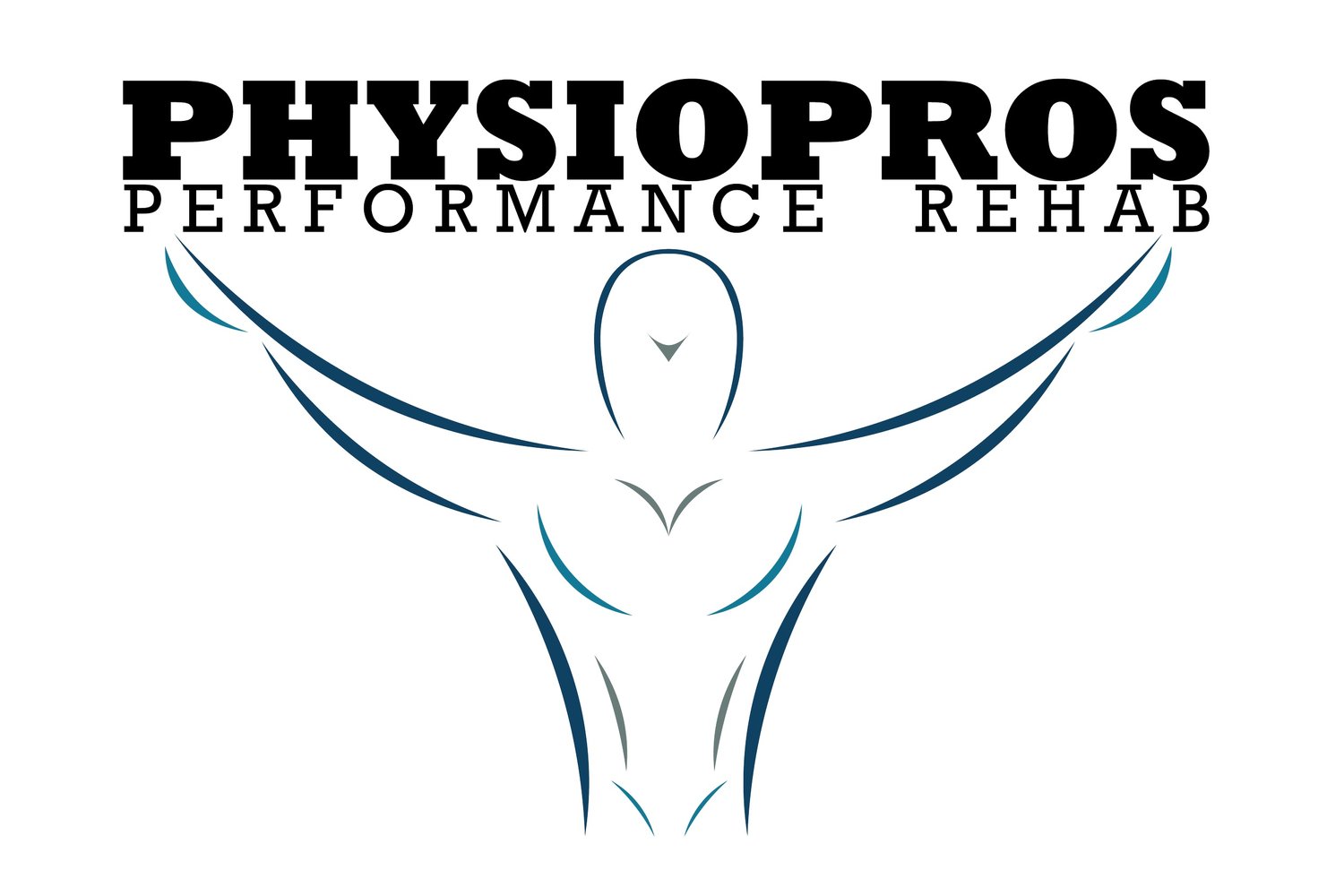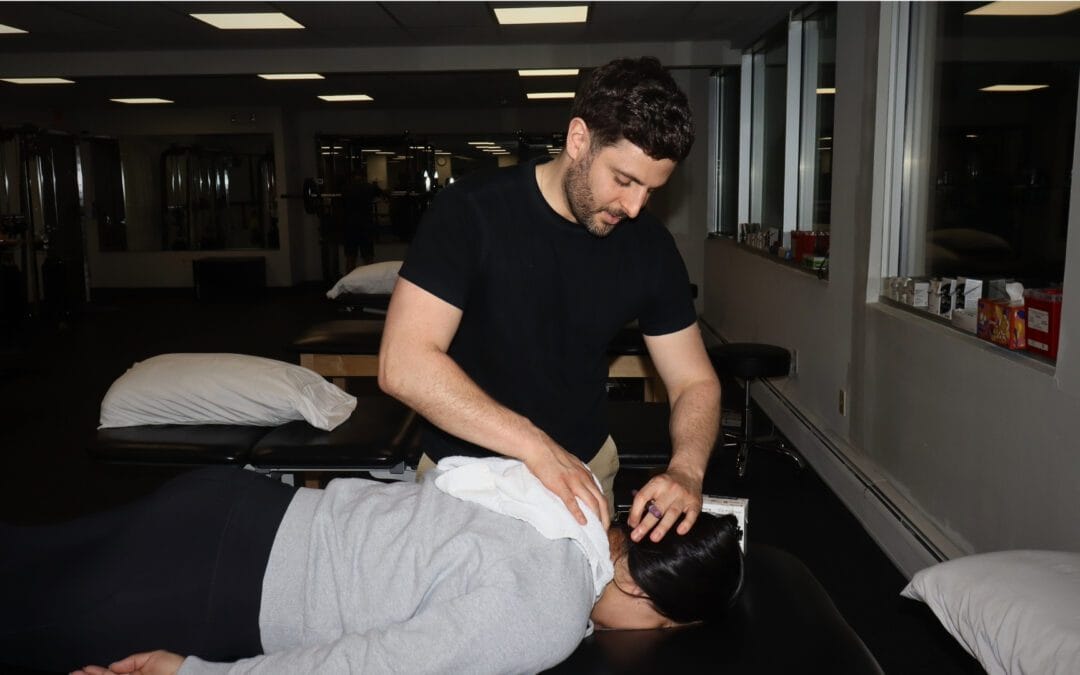Stiff Neck Exercises: Top 4 Moves for Text-Neck Relief.
If you’re tired of that nagging ache every time you look down at your phone, you’re not alone, and you don’t have to just grin and bear it. At Physiopros Performance Rehab in Parsippany, NJ, our sessions blend targeted stiff neck exercises, stretching, and hands-on manual therapy, like dry needling, cupping, joint mobilization, and more to help you break free from text-neck once and for all. First, we’ll show you four simple moves you can do anywhere, anytime. Then, you’ll learn how to combine them into a quick daily routine that eases tension, corrects posture, and keeps your head where it belongs, right over your shoulders. Let’s dive into today’s blog post!
What Is Text-Neck & Why It Happens
Text-neck describes the strain your cervical spine takes on when you habitually tilt your head forward, usually to stare at smartphones, tablets, or laptops. As your head moves just 15 degrees forward, it suddenly feels like it weighs 27 pounds more, so those small muscles along the back of your neck and shoulders end up working overtime. Consequently, you get that familiar stiffness, tight traps, and even tension headaches.
Moreover, poor ergonomics at your desk or on the couch just makes things worse. When you hunch your shoulders and round your upper back, your neck compensates by jutting forward, which only deepens the strain. Therefore, incorporating simple stiff neck exercises into your day isn’t a luxury; it’s a necessity. By strengthening deep neck flexors and opening up your thoracic spine, you’ll reverse bad posture habits, relieve muscle tension, and set the stage for pain-free scrolling.
#1: Chin Tucks
Purpose:
Chin tucks are one of the simplest yet most effective stiff neck exercises for correcting forward head posture. By gently pulling your head back over your shoulders, you’ll activate the deep neck flexors, those small muscles that help support your cervical spine, and counteract the hunched position that comes from texting and screen time.
How to Do It:
- Sit or stand tall with your shoulders relaxed and your gaze straight ahead.
- Gently draw your chin back, as if you’re making a double chin, keeping your eyes level.
- Hold that retracted position for 5 seconds while breathing normally.
- Release slowly and return to your neutral head position.
- Repeat for 10–15 reps, 2–3 times per day.
Dos & Don’ts:
- Do keep your eyes looking forward—avoid tilting your head up or down.
- Do maintain a relaxed jaw and shoulders; focus the movement in your neck.
- Don’t shrug or lift your shoulders, only your head should move.
- Don’t push so hard that you feel pain; a mild stretch is enough.
Progression Tip:
Once you can hold each rep comfortably for 5 seconds, try increasing the hold to 8–10 seconds or performing the exercise while standing against a wall to reinforce proper alignment. By making chin tucks part of your regular routine, whether you’re at your desk or on the go, you’ll build the foundation for better posture and lasting relief from text-neck.
#2: Levator Scapula Stretch
Purpose:
The levator scapulae muscle runs from the top of your shoulder blade to the side of your neck. When it’s tight, you get that stubborn stiffness along the side and back of your neck, classic text-neck territory. This stretch helps release tension and improve range of motion.
How to Do It:
- Sit upright in a chair with your feet flat on the floor.
- Rotate your head 45 degrees to the right, then tilt your ear down toward your shoulder.
- Place your right hand gently on the back of your head and apply light pressure to deepen the stretch.
- Hold for 20–30 seconds, breathing deeply.
- Repeat on the left side. Do 2–3 reps per side, once or twice daily.
Dos & Don’ts:
- Do keep your shoulders relaxed and avoid hunching them up.
- Do use gentle pressure, this isn’t about pushing hard, but feeling a comfortable stretch.
- Don’t shrug your shoulder toward your ear; let gravity do the work.
- Don’t twist your torso, only your neck should move.
Progression Tip:
If you want a deeper stretch, use a towel or strap under your rotating arm to stabilize your shoulder blade. Over time, as your stiffness decreases, you’ll notice greater freedom in your neck and shoulders, perfect for beating that text-neck slump.
#3: Scapular Retraction
Purpose:
Scapular retraction strengthens the mid-back muscles, like the rhomboids and lower trapezius, that pull your shoulders back and keep your head aligned over your spine. By reinforcing these muscles, you’ll counteract the rounded shoulders and forward head posture that fuel stiff neck pain.
How to Do It:
- Stand or sit tall with your arms at your sides and shoulders relaxed.
- Squeeze your shoulder blades together as if you’re trying to hold a pencil between them.
- Keep your chest lifted and your chin tucked slightly.
- Hold for 5–7 seconds, breathing normally.
- Release slowly and repeat for 10–12 reps, 2–3 sets, once daily.
Common Mistakes:
- Shrugging the shoulders toward your ears instead of pulling the blades down and back.
- Over-arching your lower back, focus on isolating the shoulder blades without overarching.
- Holding your breath, keep breathing steadily throughout each rep.
Progression Tip:
Once you master the basic movement, add a resistance band: anchor it at chest height, hold one end in each hand, and perform the same retraction against gentle tension. This extra load will accelerate strength gains and further improve your posture, making those daily stiff neck exercises even more effective.
#4: Thoracic Extension Over Foam Roller
Purpose:
While your neck takes the spotlight, don’t forget your upper back. A tight thoracic spine contributes to that forward-head slump, so extending over a foam roller opens your chest, mobilizes your spine, and lets your neck reset into better alignment.
How to Do It:
- Place a foam roller horizontally on the floor.
- Lie back so the roller sits just below your shoulder blades, feet flat and hip-width apart.
- Support your head with your hands, elbows wide.
- Gently arch your upper back over the roller, lifting your chest toward the ceiling and allowing your head to relax back.
- Hold for 10-15 seconds, then roll the roller slightly up or down to target different spots.
- Repeat 10 times, once a day.
Alternative (Chair Variation):
If you don’t have a foam roller, sit at the edge of a chair, interlace your fingers behind your head, and lean back over the chair’s backrest, just enough to feel a gentle opening in your upper spine.
Dos & Don’ts:
- Do keep your core engaged to protect your lower back.
- Do focus on breathing deeply to help your muscles relax.
- Don’t force a big arch, comfort is key.
- Don’t let your low back over-arch; the movement should be concentrated in your mid-back.
Progression Tip:
As your mobility improves, try lifting one leg at a time during the hold to challenge your stability and deepen the stretch. Over time, this simple mobility drill will make a big difference in your posture and complement your other stiff neck exercises perfectly.
Putting It All Together: Sample Daily Routine
Combine these stiff neck exercises into a quick, effective routine you can do every day, whether you’re at home, in the office, or squeezing in self-care on the go:
- Warm-Up (2 minutes)
- Neck circles: 5 rotations each direction
- Gentle shoulder rolls: 5 forward, 5 backward
- Main Circuit (8–10 minutes)
Perform each exercise back-to-back, resting 15–20 seconds between moves. Complete 2 rounds total.- Chin Tucks: 10 reps, hold 5 seconds each
- Levator Scapula Stretch: 20–30 seconds per side
- Scapular Retraction: 10–12 reps, hold 5 seconds each
- Thoracic Extension Over Foam Roller: hold 10 seconds, 10 reps
- Cool-Down & Self-Care (2 minutes)
- Ice pack or warm towel at the base of your skull for 1–2 minutes
- Gentle self-massage along the upper trapezius and base of skull
By following this routine once daily, you’ll ease tension, correct posture, and prevent that familiar text-neck slump. If you have any persistent pain or limited motion, consider a one-on-one session at Physiopros Performance Rehab in Parsippany, NJ, where we blend hands-on manual therapy (dry needling, cupping, soft tissue mobilization, joint mobilization, and more) with personalized exercises to get you moving pain-free.
When to See a Physical Therapist
While these stiff neck exercises can help most mild-to-moderate cases of text-neck, certain warning signs mean it’s time to seek professional care. Don’t hesitate to book a session at Physiopros Performance Rehab in Parsippany, NJ if you experience:
- Severe or Sharp Pain: If stretching or movement triggers stabbing pain rather than a gentle stretch.
- Numbness or Tingling: Radiating symptoms down your arms, hands, or fingers that don’t resolve with self-care.
- Persistent Headaches: Tension headaches at the base of your skull that stick around despite rest and ice.
- Limited Range of Motion: If you can’t turn your head fully left or right after a week of exercises.
- Postural Fatigue: Feeling constantly slumped or unable to maintain proper posture, even briefly.
At Physiopros Performance Rehab, our sessions blend hands-on manual therapy, like dry needling, cupping, and more, with personalized stiff neck exercises and stretching. In addition, we’ll assess your workstation ergonomics and daily habits to tackle the root cause of your text-neck. If you’re not seeing relief or simply want expert guidance, schedule your evaluation today and get back to pain-free scrolling and living.
FAQ
- How often should I do these stiff neck exercises?
Aim for once daily, ideally first thing in the morning or during a mid-afternoon break. Consistency is key; a quick 10–12 minute routine each day prevents stiffness from creeping back in. - Can these moves fix my posture long-term?
Absolutely, when you pair them with better ergonomics. In other words, do your stiff neck exercises regularly and set up your workstation so your screen is at eye level. Over time, you’ll retrain your muscles to hold your head and shoulders in a healthier position. - What if I feel pain during a move?
Mild discomfort or a gentle stretch is normal, but sharp pain isn’t. If a specific exercise bothers you, especially around your neck or arms, stop immediately. Then, consider booking a PT session at Physiopros in Parsippany, NJ so we can assess and adjust your plan. - Do I need special equipment for these exercises?
Not really. You can do chin tucks, levator stretches, and scapular retractions without any gear. A foam roller makes thoracic extensions more effective, but you can also use a firm chair back as a substitute. - When will I notice relief from text-neck?
Many people feel less tension and better posture within 1–2 weeks of daily practice. If you’re not seeing improvement after two weeks, or if your symptoms worsen, reach out to us to fine-tune your routine.
In Conclusion
By integrating these stiff neck exercises into your daily routine, you’ll tackle the root causes of text-neck, relieving tension, improving posture, and preventing that familiar ache. Remember, consistency matters most: a quick 10–12 minute session each day can make a world of difference.
If you need extra support or face persistent pain, Physiopros Performance Rehab in Parsippany, NJ is here to help. Our one-hour sessions combine manual therapy with tailored exercises and ergonomic advice.
Ready to ditch the stiff neck for good?
- Book your evaluation online at https://physioprospt.com/contact/ or call us at (973) 265-8621.
- Stay tuned for more of our blog posts on neck exercises and stiffness.
- Follow us on social media for free tips and to stay up-to-date on everything regarding physical therapy and Physiopros Performance Rehab.
Instagram- @physioprospt
Facebook- @physioprosperformancerehab
TikTok- @physioprospt
Don’t let text-neck slow you down, reach out today and get back to pain-free scrolling and living!

